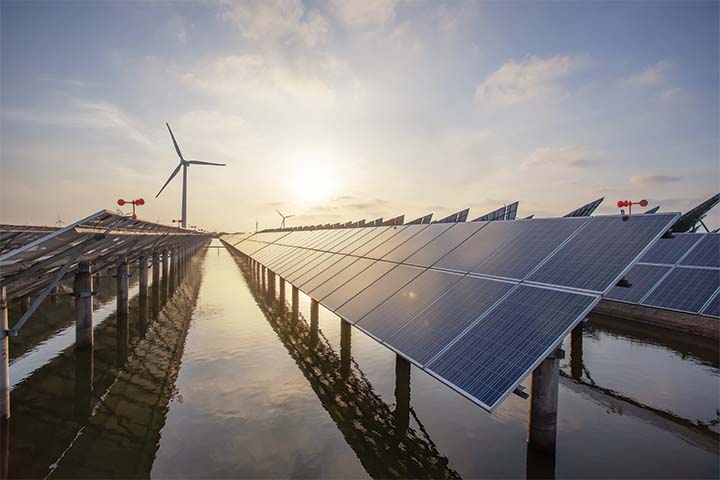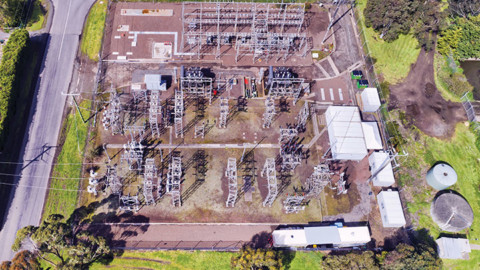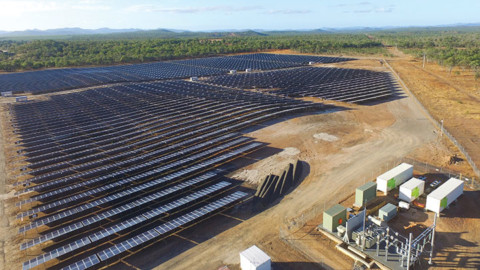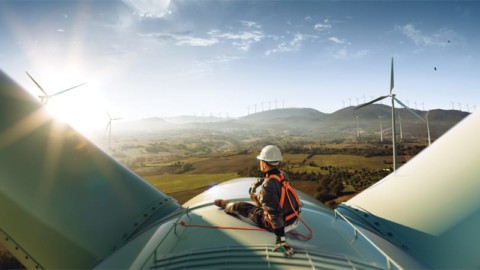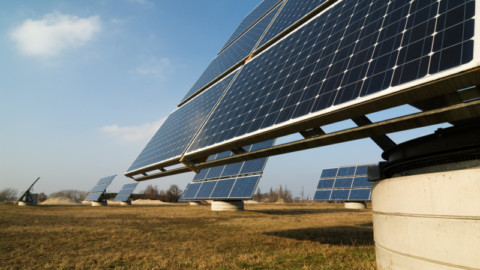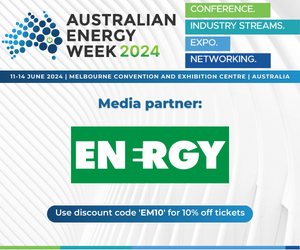by Lauren DeLorenzo, Journalist, Energy magazine
Australia has been criticised for dragging its feet on climate change initiatives compared to other wealthy countries, and the Federal Government has faced increasingly urgent calls to commit to net zero emissions targets by 2050. The Federal Government’s long-awaited strategy, which pledges net zero emissions by 2050, has received mixed responses from industry bodies and experts.
As world leaders prepared for the 2021 United Nations Climate Change Conference (COP26) in Glasgow in late-October to November, the Federal Government faced pressure to join its states and territories in backing a net zero by 2050 target.
Days ahead of the COP26, and amid international pressure to set targets which align with the majority of nations, the Government has agreed to a net zero by 2050 goal, unveiling its new Long Term Emissions Reduction Plan, which outlines the strategies to meet the emissions reduction goal.
The plan relies on advances in technology to cut emissions, rather than taxation or regulation of existing industries. Its strategies focus on driving down technology costs and accelerating their deployment at scale across the economy, unlocking investment in hydrogen, carbon capture and storage and large-scale energy storage.
Five-yearly reviews of the plan will track progress and enable it to adapt to new advances in technology. Objectives in the plan include reducing steel and aluminum industries’ emissions reduction costs, reducing soil carbon measurement costs so that land managers can store carbon in soil, and developing a Future Fuels Strategy to support zero emissions vehicles.
The plan also identifies the potential for ultra low-cost solar, and an annual update to the Technology Investment Roadmap has set a stretch goal of solar electricity generation at $15MWh.
Government sticks with technology over taxes
Prime Minister Scott Morrison said, “The plan will deliver results through technology, not taxes. It respects people’s choice, and will not force mandates on what people can do or buy.
“It guarantees that we keep downward pressure on energy prices and secure reliable power. It will ensure that Australia continues to serve traditional markets, while taking advantage of new economic opportunities.”
Updates to the plan are expected to reduce emissions by around 40 per cent, global technology trends will account for a 15 per cent emissions reduction, and high-integrity offsets are expected to achieve a further ten per cent reduction. The plan rules out taxes or a legislated mechanism.
Federal Minister for Industry, Energy and Emissions Reduction, Angus Taylor, said, “Our plan continues the policies and initiatives that we have already put in place and that have proven to be successful, while preserving existing industries and jobs, and supporting regional Australia.
“It will not shut down coal or gas production, or require displacement of productive agricultural land.”
Hydrogen, gas the way forward?
Australian Petroleum Production and Exploration Society (APPEA) Chief Executive, Andrew McConville, said the oil and gas industry would be an important part of meeting net zero emissions targets through natural gas.
“Multi-billion dollar technology is already up and running across the country helping to reduce emissions, including carbon capture and storage, offshore batteries on platforms and installation of renewables to help power our sites,” Mr McConville said.
“Investments are also being made as recently as this week that will also see hydrogen produced through steam methane reforming – the lowest cost, most rapid way to commercialise this important new fuel.”
Monash University professor in Geomechanics Engineering, Ranjith Pathegama Gamage, said that while he sees a place for gas in Australia’s energy mix, it should not be the sole option.
“While we rapidly transition from one nergy source (coal) to a better option (gas), we also need to be developing cleaner, sustainable, renewable energy sources, such as wind and solar,” Professor Gamage said.
“But it’s not an ‘either/or’ proposition as is often debated in research and media circles – it’s possible to do both. “Australia needs to find ways to turn waste into products.
My recommendations for Australia to reduce the resource industry’s carbon footprint are to develop rock-breaking technologies that use less energy, create a circular economy that turns resource industry waste into wealth and develop renewable energy sources, such as “renewable deep-earth energy batteries” (geothermal).”
The future of electricity generation
The Australian Energy Council’s (AEC) Chief Executive, Sarah McNamara, welcomed the emissions reduction target as a starting point for further progress.
“We have always argued the first and most critical step to reducing our emissions is agreement on a long-term target, which acts as the starting point for constructive consensus,” Ms McNamara said.
“Electricity generators, as major carbon emitters, have long recognised their pivotal role in assisting Australia to reduce its emissions.
“As a result, we have seen greenhouse gas emissions in the National Electricity Market fall by around 20 per cent by 2030 from the 2005 baseline. Further reductions are expected beyond 2030, which will help get to the 2050 target.
“However, whilst electricity continues to make great progress in emissions reduction, other sectors will need to step up and play their part.
“Australia cannot rely entirely on one sector whilst deferring action elsewhere. Whilst some sectors will need new technology, economic options already exist to electrify heating and light transport. We call for action in these sectors this decade.”
Technology and carbon capture solutions
The Federal Government plans to invest $20 billion in low emissions technology in the next decade, expecting to unlock both public and private investment.
Monash University Associate Professor, Akshat Tanksale, from the Department of Chemical and Biological Engineering, said, “Carbon capture and storage (CCS) was once considered a possible method for reducing the impact of the emissions, however, it has since proven to be economically unviable in many parts of the world, as it is highly site dependent and there are no economic benefits in the absence of a carbon price.
“A better alternative is carbon capture, utilisation and storage (CCUS), in which C02 is converted into value added chemicals and fuels using renewable energy in addition to excess carbon storage, where applicable.”
Calls for more ambitious targets
The Smart Energy Council, the peak independent body for Australia’s solar, energy storage and smart energy industry, has called the plan ‘an extraordinary lost economic opportunity.’
Smart Energy Council Chief Executive, John Grimes, said, “Trillions of dollars of investment is ready to land in Australia, just waiting for clear policy direction. “Fantasy investments in gas, carbon capture and storage and fossil fuel hydrogen is not a plan.
“The Smart Energy Council calls on the Morrison Government to join our major export and security partners in committing to at least 50 per cent reductions in emissions by 2030.”
The Clean Energy Council called for more ambitious targets, and said in a statement that, “A refusal to take on greater ambition over the next decade will likely leave Australia isolated and unable to make the most of the economic benefits that come with rapid decarbonisation.
“Without a stronger 2030 target, there remains a lack of clarity and positive investment signals to accelerate the decarbonisation of Australia and take advantage of the enormous economic opportunity in play.”
Expected COP26 outcomes
COP26 is considered the most significant global climate event since the 2015 Paris Agreement. It is seen as essential in keeping the global average temperature below 2 degrees celsius and avoiding the most catastrophic effects of climate change.
Pressure is growing for countries to step up climate initiatives as experts report the acceleration of planetary warming, and warn that keeping temperatures below 1.5 degree celsius will require drastic cuts to bring emissions down to zero in the next 30years.
Pledges on ending coal and petrol cars are also expected to be encouraged. Professor Graham Currie, from Monash University’s Department of Civil Engineering, said that transport was Australia’s single biggest area of greenhouse emission growth.
“Electric car uptake is critical to Australia achieving a 2050 net zero target. Yet Australia has amongst the world worst uptake of electric vehicles; 0.78 per cent of new car sales are electric compared to a 4.2 per cent global average,” Mr Currie said.
“COP26 needs to give Australia a gigantic kick in the pants when it comes to electric vehicle uptake.” It is expected that the conference will aim to have all countries support net zero emissions by 2050, with ambitious targets for 2030.





